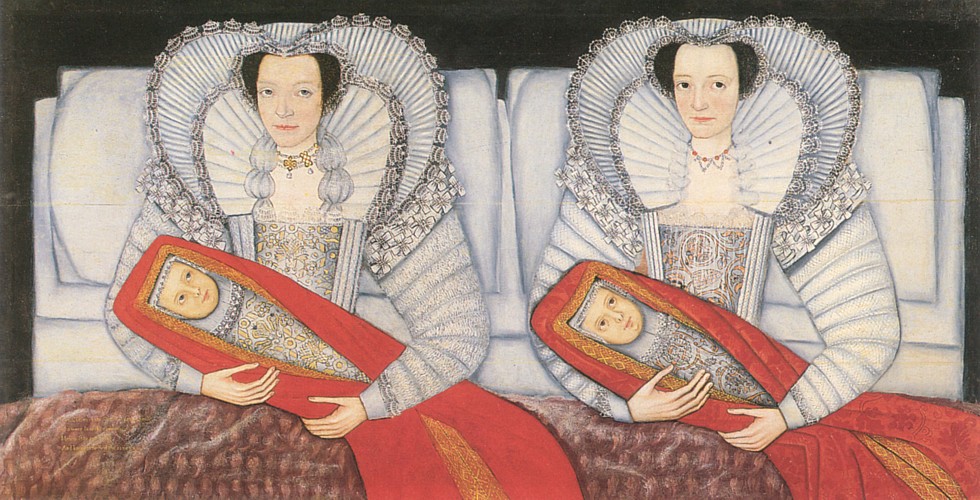 |
The Cholmondeley Sisters (1600-10) |
"There is a famous painting of the English school, The Cholmondeley Sisters (1600-10), which represents two sisters side by side, each holding a baby in her arms. The two sisters look very much alike, as do the babies, sisters and babies are dressed almost identically, and so on. Confronted with this canvas, one is disturbed by a repetition that is not a repetition, by a contradictory repetition. What is here painted is the very subject of figurative painting: repetition, with, in this repetition, all the play of the innumerable differences which at once destroy it (from one figure to the other, nothing is identical) and assert it as violent effect. Panic and confusion of the look doubled and split. The image is in the image, the double is not the same, the repetition is a fiction: it makes us believe that it repeats itself just because it does not repeat itself. It is in the most "analogical" representation (never completely so), the most "faithful", the most "realistic", that the effects of representation can be most easily read. One must be fooled by the image in order to see it as such (and no longer as a projection of the world)." [Jean-Louis Comolli, Machines of the Visible, 1971]
I am reading this article by Comolli for my thesis, and this passage made me read it a few times over. I like the way that illusion, or "reality," or mimesis, or duplication all loose their threatening stance and become play when one can clearly see they are inevitably impossible.
This painting, in my memory, is an image in an art book that I used to have as a child.
No comments:
Post a Comment